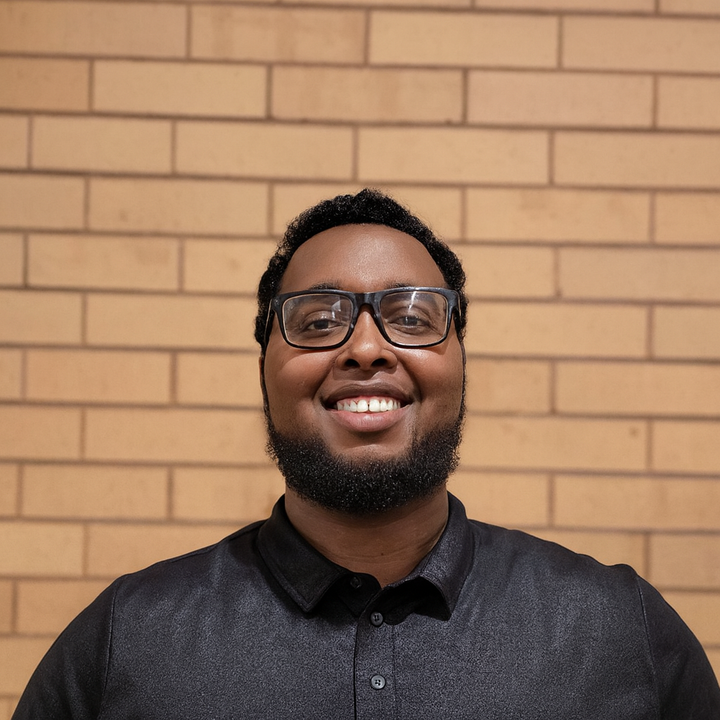Access to Amherst Students Reflect on Demographic Changes in Largest Cohort Yet
Students hosted high school seniors for what the admissions department said was its largest ever in-person Access to Amherst program. The Student spoke with participants about how their perceptions of Amherst were affected by the recent drop in Black enrollment and the end of affirmative action.
The Access to Amherst (A2A) program brought dozens of high school seniors to campus this past weekend.
The end of affirmative action and the subsequent drop in Black enrollment for the class of 2028 was the ever-present backdrop of this year’s program, which “centers the experience of marginalized students,” according to the college’s website, though it is open to students from all backgrounds. In the wake of the demographic changes, the college has vowed to step up outreach to students from marginalized communities.
In a statement to The Student, Dean of Admissions and Financial Aid Matthew McGann said that this year’s program was “the largest in-person, single-session A2A we’ve held,” though he didn’t get into the numbers. He also said the college had increased its outreach to community-based organizations that focus on college access.
“This summer, more than 800 [community-based organizations] received a mailed packet showcasing Access to Amherst,” said McGann.
The Student interviewed a number of A2A participants as they walked between classes they sat in on, ate in Valentine Dining Hall, and chatted together in the Science Center during their downtime. They shared their thoughts about Amherst, the ways they found out about A2A, and how demographic changes play a part in their own upcoming college admission process.
Almost all participants elected to stay anonymous due to concerns that their responses may impact their admission chances.
Many students expressed that demographics in the region were noticeably different compared to their hometown.
“I think it is a shock, you know, coming from such a cultural hub to now, like, middle of nowhere,” said one student from Miami, Florida.
Some were surprised at the racial makeup of the college. One student from Los Angeles, California, said she expected a more diverse student body. “I thought it was like 50/50… it's looking 70/30. It just kind of was off in my head,” she said, with regard to the ratio of white students to students of color.
A2A students were very curious about the impacts of overturning affirmative action. They said that Diversity Equity and Inclusion Interns talked about it in “Real Talk” sessions, where a panel of DEI Interns answered any questions about campus life and admissions processes.
DEI Intern Audrey Zhou ’26 told The Student that this year, “Real Talk” sessions were moved to the second day of the program to give students the opportunity to ask more questions.
Zhou said that interns expressed their own concerns with the change in demographics and highlighted the work of affinity groups on campus in response to the seniors’ questions about the fall of affirmative action.
A2A participants had mixed feelings on the impact of the end of race-based affirmative action. Some students said it plays an important part in deciding what college they attend and affects their perceptions of Amherst.
Others said they had conversations with current students about demographic changes, specifically regarding the recent decrease in Black enrollment.
“[It’s] definitely something that’s a little off-putting for me, because I want to be able to find community and people who are just like me,” said one student from Virginia.
“You’re going to find more similarities with people that are essentially of your background, of where you come from [...], so that’s kind of that stepping stone on where kids are going to acclimate,” said the student from Miami.
Other students were more indifferent to the changes.
Kiro, a high school senior from California who asked to be identified by his first name only, said he expected to find a lack of his ethnic representation in college, regardless of the status of affirmative action.
“Because I’m Middle Eastern, and specifically I’m Egyptian, there’s very few [of us] no matter what college you go to,” he said. “If I was looking at demographics and trying to find a group that had more Middle Easterners, I don’t think I’d even find that.”
Another student said that neither changes in demographics at Amherst nor affirmative action nationally changed her decision-making.
“There’s not much that a student can do about it,” she said. “With affirmative action being overturned, there’s not much that the admissions officers can do about that either.”
The students who spoke with The Student reported hearing about A2A in a number of different ways.
One student from the New York area said she heard about it from a college counselor at her prep school, and also through a college-access community-based organization: “My contact person … gave me a long list and I just applied to a bunch.”
Another student from Arizona said she also learned about A2A and college fly-ins through an admissions-focused community-based program. Two others found out about it through friends.
Many agreed that fly-ins like A2A were game-changers in their admissions process. “Without these fly-ins it would be impossible to visit these schools and see what type of school would be best for me,” said a student from Boston, who actually arrived via bus.
A2A also provides multiple application-based benefits to participating students, including workshops to improve their supplemental essays and a fee waiver for their prospective application to Amherst.
“A2A [this year] definitely felt like an important opportunity both to try to ensure there is a diverse applicant pool as well as promote college access for underrepresented communities,” Zhou said.





Comments ()